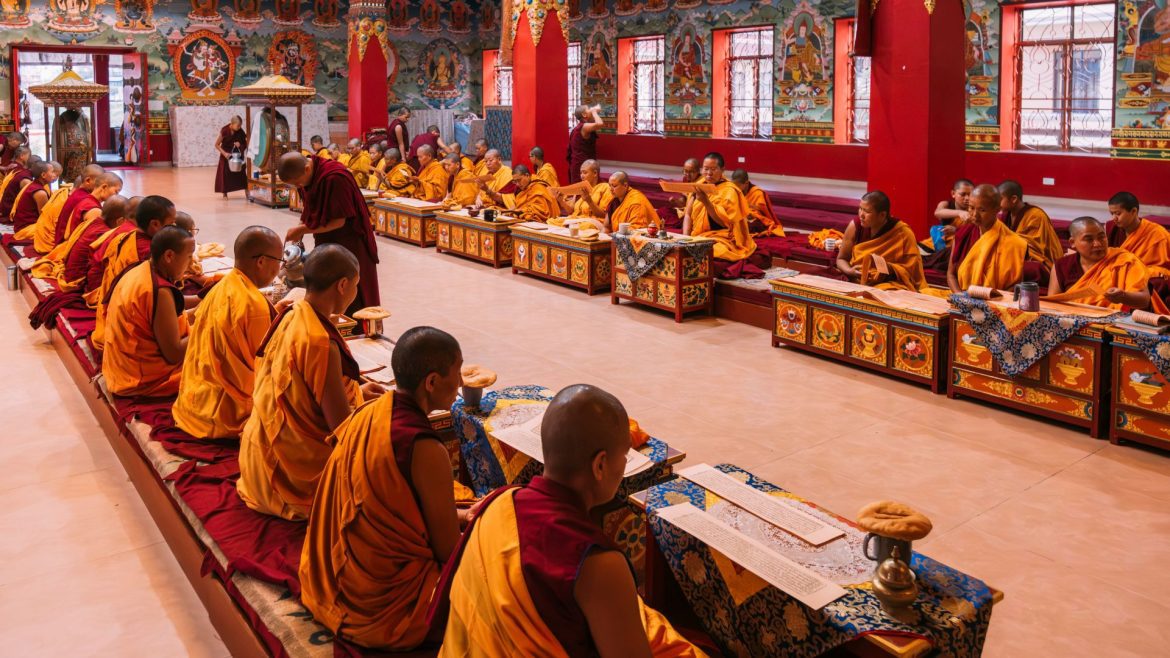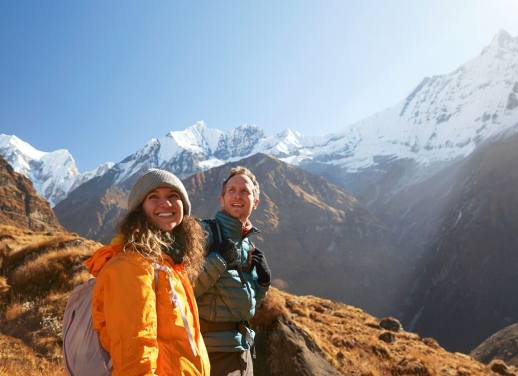As the sun rises over Kathmandu, the city basks in a quiet stillness – a rare find among the commonly chaotic streets. But the halls of Khachoe Ghakyil Ling, a Buddhist nunnery on the city’s outskirts, are loud – it’s time for prayer (and chai).
The fresh morning air takes the edge off our 5 am wake-up. As our minibus winds through the tightly woven Kathmandu streets, we’re glued to the windows. The city we’d wandered in the previous day was different now. It was still.
Only a few shop vendors tend to their displays for the day, some sari-clad women sweep their sidewalks, while a handful of tiny, embellished taxis make the streets move.
It’s a stark contrast to the anarchy of cabs and cars that flooded the dusty pavement and the sea of people that usually crowd the noisy sidewalks. And it fascinates us.
We’re on the road before the rest to reach the Buddhist nunnery Khachoe Ghakyil Ling (meaning pure land of bliss) during their prayer time.
Known locally as Kapan Ani Gompa, the Buddhist nunnery was founded more than 30 years ago and follows the Gelungpa school of Buddhism. It offers women a rare opportunity to learn standard academic subjects alongside traditional Buddhist teachings, like philosophy, ritual arts and chanting.
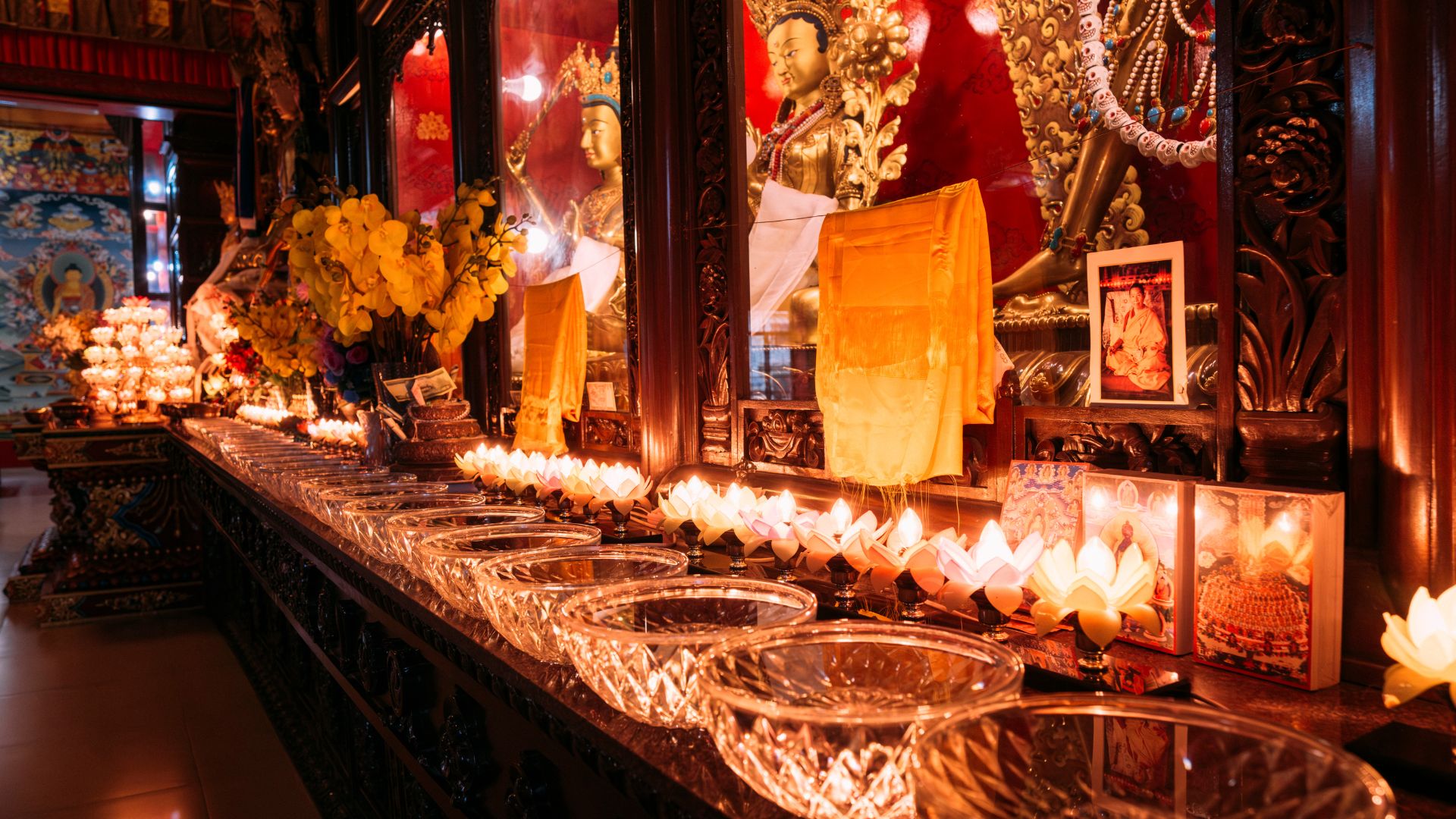
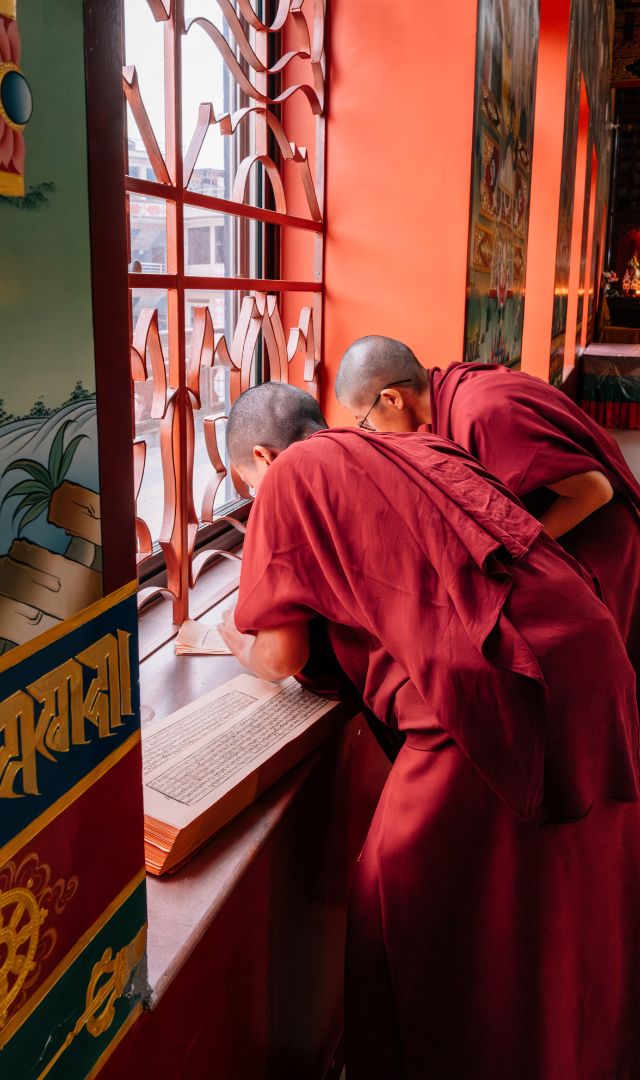
We pull up, and a set of wooden gates as tall as two men open wide to welcome us. Our Intrepid Nepal leader, Sumi Acharya, gestures us to quickly follow her across the neatly kept grounds – the nuns have already begun their morning prayer.
Within a few minutes we’re standing at the doorway to what must surely be the most ornately decorated building any of us have ever seen – the main prayer hall of Khachoe Ghakyil Ling.
‘Wow’, says one of the women in our group of six, as she looks up in awe, mouth wide open. Her words aren’t profound, but I can’t think of anything more fitting either.
As we wait at the entrance, Sumi explains that the nunnery is home to almost 400 Buddhist nuns, some as young as nine and up to 70. Some are here to devote their lives to learning the teachings of Buddha and follow the higher education program. Some are here to serve their community as teachers, cooks or workers in their hand-made incense shop. And we are here to observe and listen as they perform their morning prayers.
Before long, a small, barefoot woman wrapped in a flowing maroon robe hurries over to us. She motions for us to take off our shoes and welcomes us into the sprawling prayer hall. We bow our heads softly and follow her in.
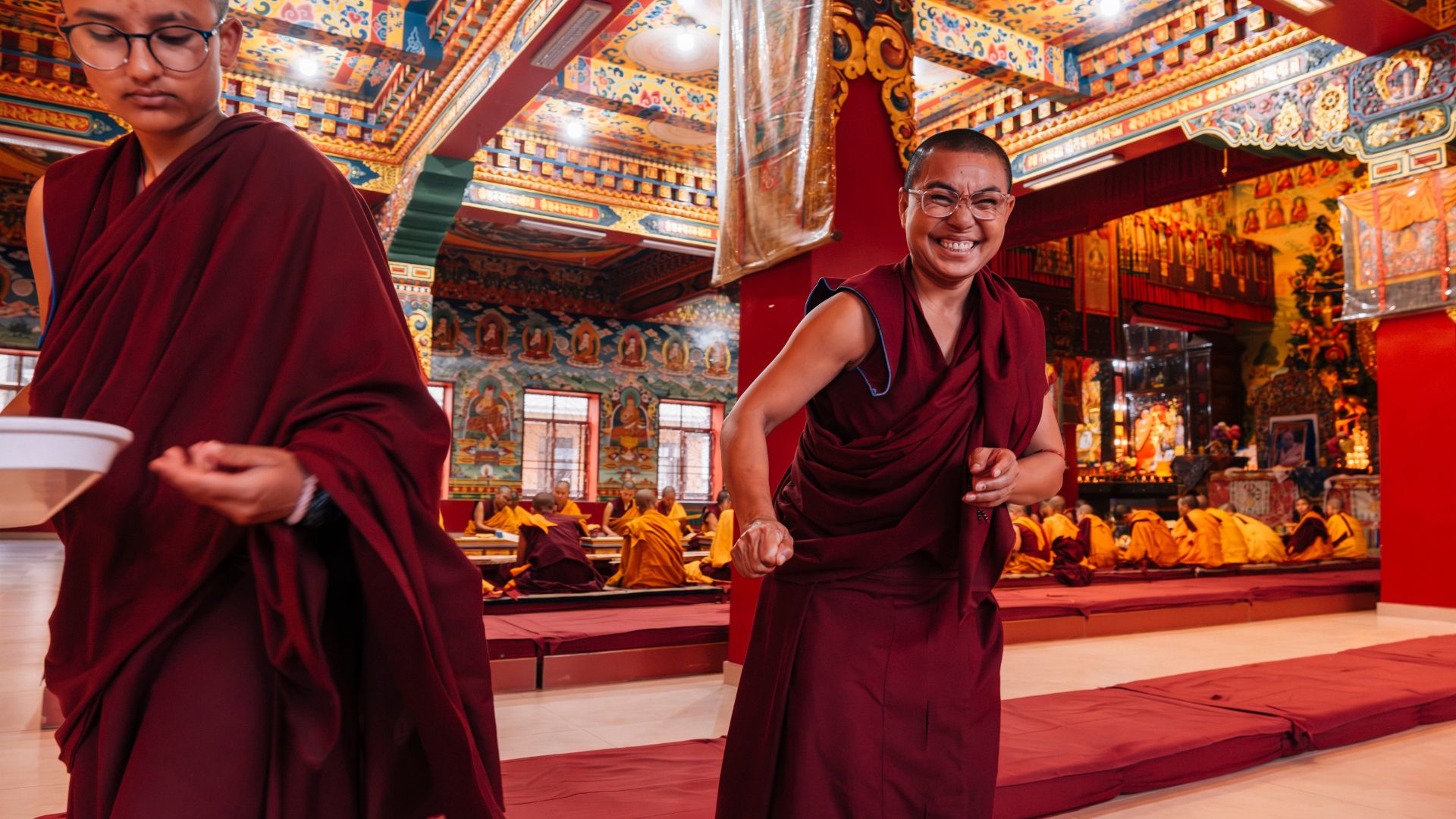
When I say every inch of the hall is embellished with intricate artwork, I mean it. The walls and ceiling tell tales of different Buddhist deities with gold, deep reds and forest green. Sumi tells us the life of Buddha is also depicted throughout these paintings, alongside a huge illustration of the Tibetan Wheel of Life which represents the cycle of life, death and rebirth.
At one end, an alter with ornaments, statues of Buddhist gods (including the Buddhist deity, Avalokiteshvara with 1000 thousand arms), candles and flowers overlook the hall.
And there, in the middle, sit some 40 nuns singing their morning prayers. To me, it sounds like a mix between a chant and a song. They sit on cushions in two rows facing each other, swaying side to side in unison. Their maroon uniform now has a deep yellow shawl, known as a chogu, wrapped on top. This chogu is worn most typically by nuns who follow the Gelungpa school.
I can’t help but grin as I notice some of the younger girls tucking into their breakfast as the others pray, some giggling between themselves. Although Sumi had told us that girls as young as nine have joined the nunnery, I’m still surprised (and delighted, in a way) to see they’ve kept their child-like charm in what seems such a grown-up space.
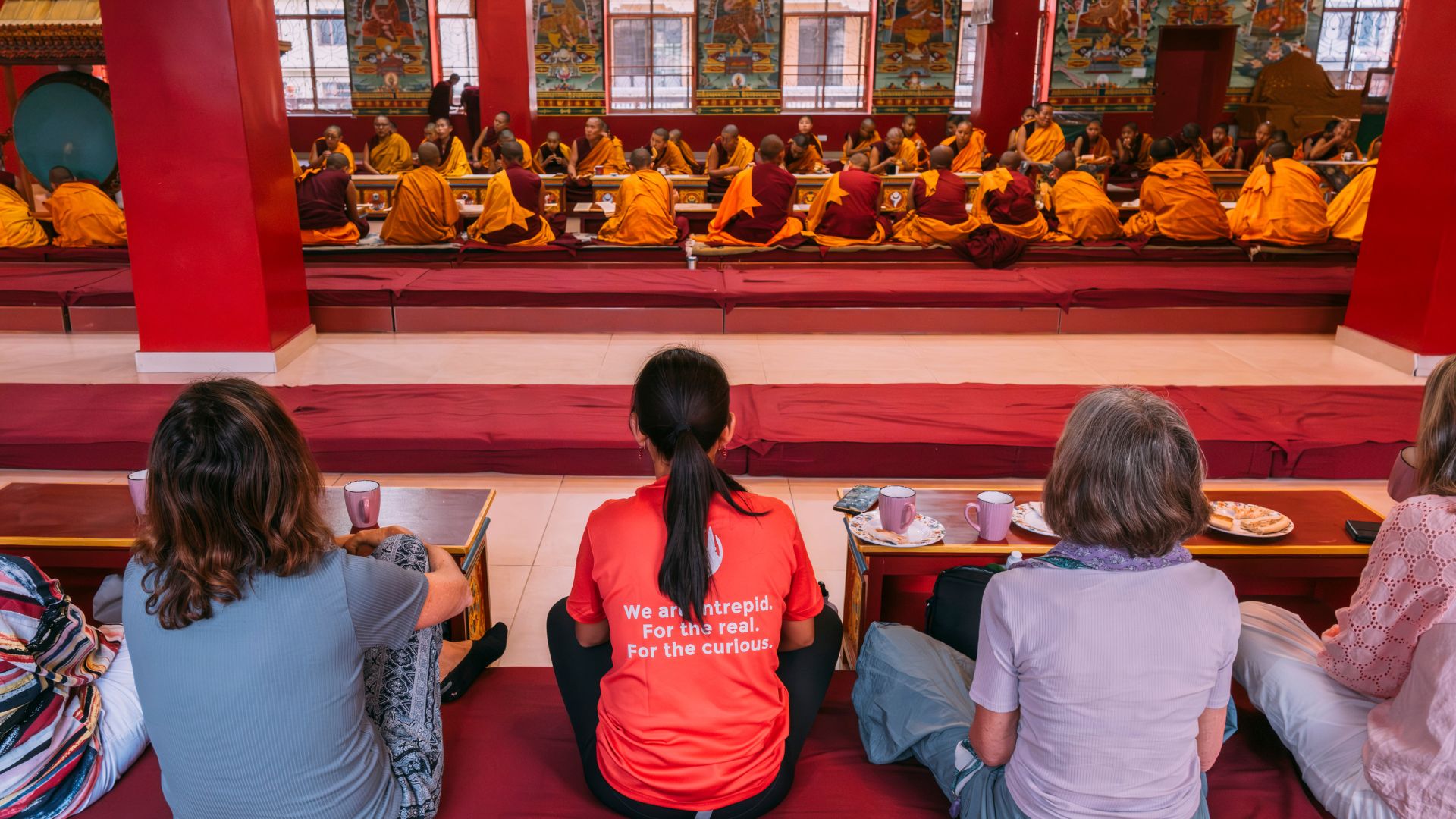
When a woman devotes her life to Buddha, she leaves behind materialistic values. She trades her clothes for a robe and shaves her head to symbolise simplicity and detachment.
We sit cross-legged on the floor on one side of the hall, mesmerised by the sights and sounds, each of us quietly grinning from ear to ear. We know this experience will stay with us long after the morning ends.
Another nun approaches our group in her long maroon robe, just like the rest, and a large pair of black reading glasses.
‘Chai?’ she says with a smile as she holds up a silver thermos twice the size of my head. ‘Yes, please,’ we all nod.
We may have only been in the country a few days, but it doesn’t take long to realise that the sweet, rich chai here is not something to turn down.
The subtle aromas of spice and cinnamon fill the air as we clutch our hands around our warm mugs and listen to the hum of the women and girls who’ve devoted their lives to Buddha.
Sound like your cup of tea? Soak up this memorable experience for yourself on Intrepid’s Nepal: Women’s Expedition.
All images by Yvette Scott.

